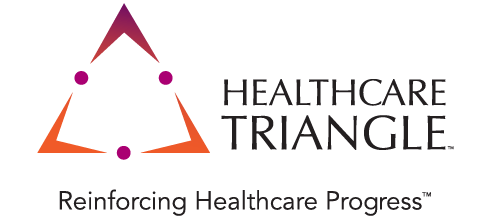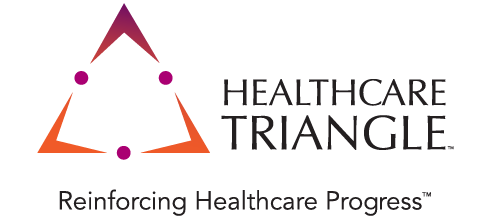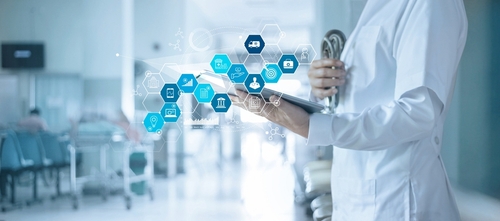A ‘Neutral ZoneTM’ for Data Sharing Allows Researchers to Share Data for Drug Discovery While Remaining HIPAA-compliant, Preventing Data Leaks
By Healthcare Triangle
Jun 8, 2022
In a collaboration using a neutral zone, organizations do not have access to each other’s data, but will instead have access to insights gathered by pooling their data together with other organizations for analysis by artificial intelligence technology.
In the area of drug discovery, open data sharing reigns as a top driver for new development; however, issues relating to the security of protected health information during data research partnerships—as well as the ability to protect intellectual property (IP) and make data ready for analysis—remain primary concerns for pharmaceutical and life sciences organizations as information moves beyond their firewalls.
For these reasons, decentralized approaches to data collaboration have become a strategic trend in technological innovation. Specifically, the development of technology that can provide a “neutral zone” for data sharing is fast becoming a top trend in health care technological development.1
How a Neutral ZoneTM Works
A Neutral Zone empowers pharmaceutical companies and life sciences organizations to harness the power of identified patient data at scale—their own and those of data research collaborators. Organizations partner with a third-party algorithm provider to create a “secure sandbox” where artificial intelligence (AI), machine learning, and other advanced algorithms can be applied to the data for analysis.2 In this Neutral Zone, data are essentially shared but remain sealed to each organization.3 The raw data are never disclosed to the parties involved, and data owners can control both which portions of a data set are used and how they will allow those data sets to be used.
The potential impact of this technology on drug discovery is significant. With the use of a Neutral Zone for data sharing, innovation no longer depends solely on the ability of one company to capture and analyze data. Instead, companies can collaborate with each other as well as other organizations, such as academic medical centers, to uncover insights using real-world data. This deepens the well of data to which pharmaceutical companies have access without sacrificing the security of that data or putting their intellectual properties (IP) at risk. Following the release of the results to each data-sharing party, the data sets and the algorithms used within the Neutral Zone are destroyed, maintaining the safety of the sealed data for all parties.
Currently, several organizations have begun to use a Neutral Zone for the purpose of secure data collaboration, such as St. Jude Children’s Research Hospital, Adaptive Biotechnologies, and Answer ALS, who are working to develop targeted care interventions that could reduce the cost of AI-powered analysis over time.4
Additionally, 10 pharmaceutical companies have come together to advance drug discovery in MELLODDY (Machine Learning Ledger Orchestration for Drug Discovery), which is a coopetition model using a decentralized, data-private, machine learning approach to collaborative research.5 Further, Roche and Bristol Myers Squibb have begun to collaborate on AI and digital pathology to develop highly personalized cancer treatments, including for non-small cell lung cancer.6
In these collaborations, these organizations will not have access to each other’s data directly, but will instead have access to insights gathered by pooling their data together for analysis by AI technology. In light of this development in data sharing, Deloitte predicts that a significant number of health care organizations will be exploring opportunities to accomplish business goals using AI-based analysis of other organizations’ data by the end of 2023.7
An Industry-Defining Capability
For pharmaceutical and life sciences companies, the ability to support secure data collaboration for research and analysis is quickly becoming a competitive differentiator. As COVID-19 has accelerated the decentralization of virtual trials—with more trials performed remotely or with the help of other parties to cut down on travel times and expand the pool of participants—Neutral Zone can also enable pharmaceutical and biomedical companies to securely access and analyze this data for research. This has the potential to support and strengthen the validity of the data accumulated for populations that have historically been underrepresented in clinical trials due to issues pertaining to health care access and travel limitations to in-person clinical trial sites.8
Now, 76% of executives across industries believe new ways of collaborating with ecosystem partners and third-party organizations—including competitors—are key to innovation.9 Experts also predict that secure data-sharing capabilities could better position organizations to monetize their own data as well.10
How a Neutral ZoneTM Works
The success of a Neutral Zone approach starts with selecting a third-party organization that can bring parties together for collaborative research and analysis in a neutral environment. Three attributes of a Neutral Zone partner are helpful to consider.
Expertise in preparing data for AI analysis. AI analyses are only as good the data that go into the algorithms, but preparing data for analysis can be time-consuming and complex work. This is especially true when data come from numerous sources and in multiple forms. Look for a partner who has demonstrated expertise in aggregating, ingesting, and extracting data for rapid analysis.
Prebaked security, GxP, HITRUST, and performance controls. This ensures that AI algorithms are deployed in a baseline secure and compliant environment, allowing organizations to focus on leveraging the Neutral Zone for research rather than worrying about the risks involved.
Transparency into how the data is used. After each analysis, the Neutral Zone should disseminate the results to each party. It should also create a record of the analysis so that data owners can see how their data was used.
A Neutral ZoneTM for collaborative research is one that is HIPAA-compliant, prevents data leaks, and ensures robust data access control and monitoring. It’s a capability that can broaden health care researchers access to data for analysis and strengthen the agility and performance of research endeavors across health care, potentially leading to new breakthroughs in drug discovery for disease targets with high unmet need.


